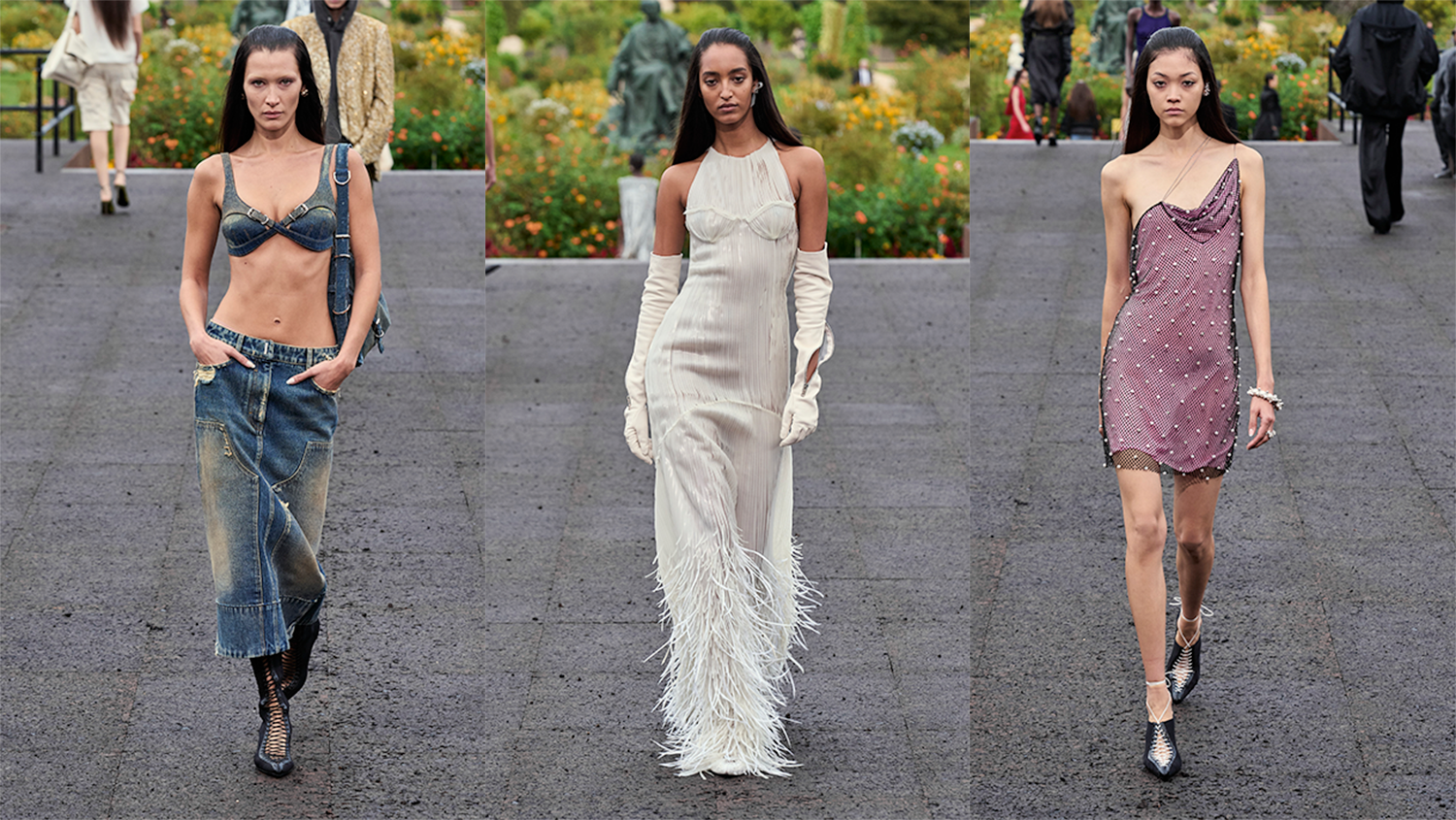At the Jardin Des Plantes in Paris, under the deluge of rain and screaming fans, Matthew Williams presented the best and most well-rounded collection of his tenure at Givenchy so far. It had been threatened, for a moment, by disaster. As guests filed in through a roadblock of amassed devotees outside the show, waiting to catch a glimpse of Kanye West, the skies opened in one of those violent and brief autumnal Parisian downpours. It added an element of frenzied chaos to the afternoon, which was an odd juxtaposition to the collection itself, which was calm and restrained – a stripped-back synthesis of the worlds of Hubert de Givenchy and Matthew Williams. It was a collection that was about getting rid of the overcomplications of design, and instead searching out the sympathetic spaces where the two worlds can co-exist.
And so Matthew looked to Hubert’s contributions to America, primarily through the iconography of the cinema, and it also placed his own contributions to fashion, through streetwear, within the context of Parisian fashion in 2022. It was also, in part, about how the gaze of the outsider can have a transformative effect. But it wasn’t so literal, and was even quite post-modern and playful in its approach: a bouclé, just-over-the-knee pair of combat shorts adorned with six pockets being a case in point.
The opening looks clashed neon pink and green against slate grey and black, and were gathered in the centre using a technique Hubert developed. And then classic Parisian skirt suits were shrunk or elongated or nipped in at the waist, coats were worn as capes, and blazers were oversized and worn with jeans. Much of this resembled how many people actually dress in Paris (or New York, or London, or LA, or Hong Kong), a style that Matthew and his generation of designers pioneered, and to which he staked a claim here. It spoke to the fact that influence and style move in many ways, across many borders, and are no longer rooted in monocultures but instead exist quite freely.
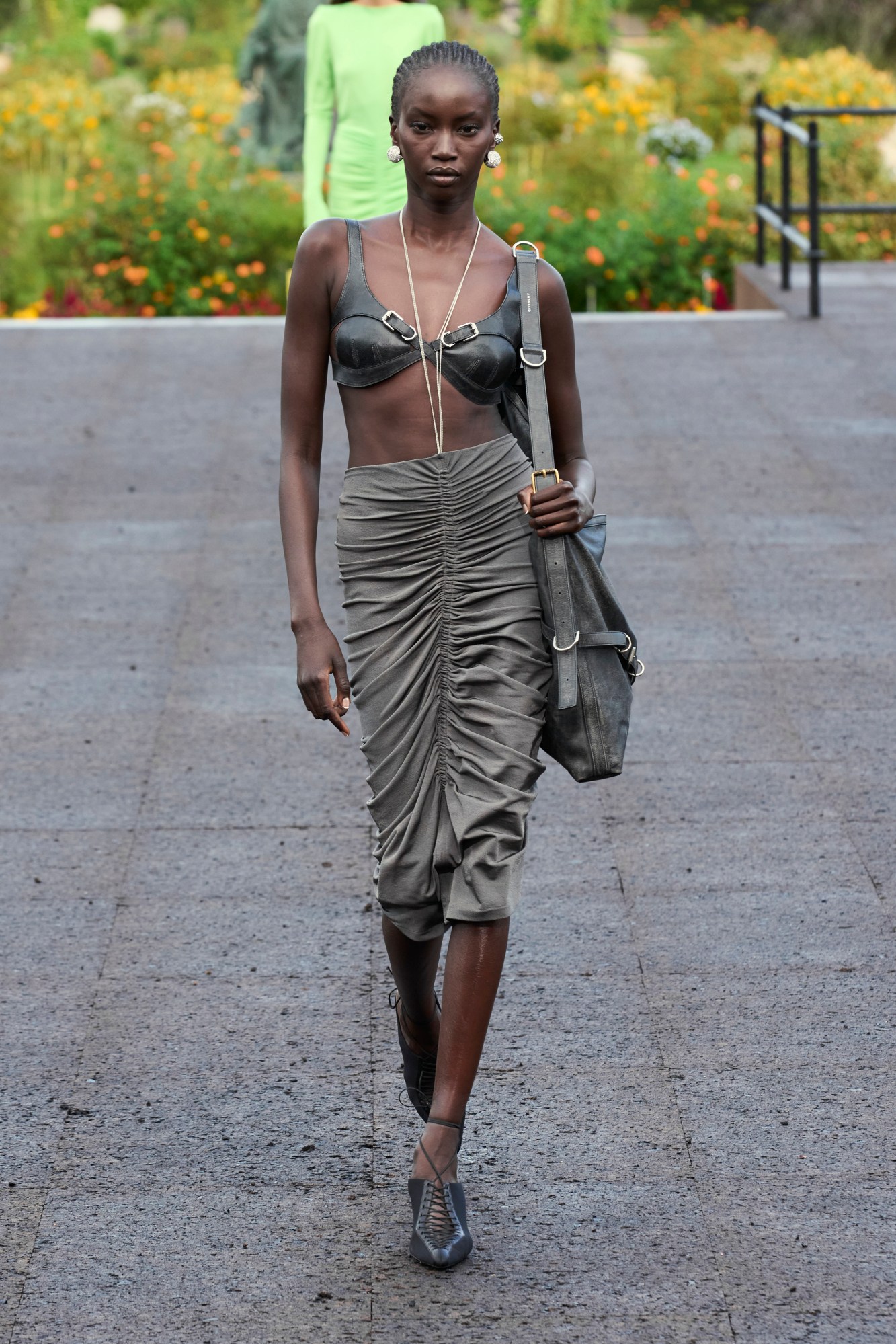
“In creating the collection, I wanted each silhouette to embody the exchange between traditionally French and American ways of dressing in the urban environment,” Matthew explained. “It’s a study of the elements we associate with ‘Parisian chic’ and ‘Californian cool’, and how those contrasts have integrated in the digital borderless world.”
It seemed designed without an eye for pointless novelty, so no flashy collaborations or trite gimmicks. Instead, just an eye for creating fashion: clothes that are desirable; clothes that people want to wear; clothes that are beautiful. The last section of looks featured five variations of the little black dress, before closing with Mona Tougaard in a breathtaking white one, with Matthew, you felt, wanting to end the show with a pitch for the contemporary relevance of the elegance of Givenchy.

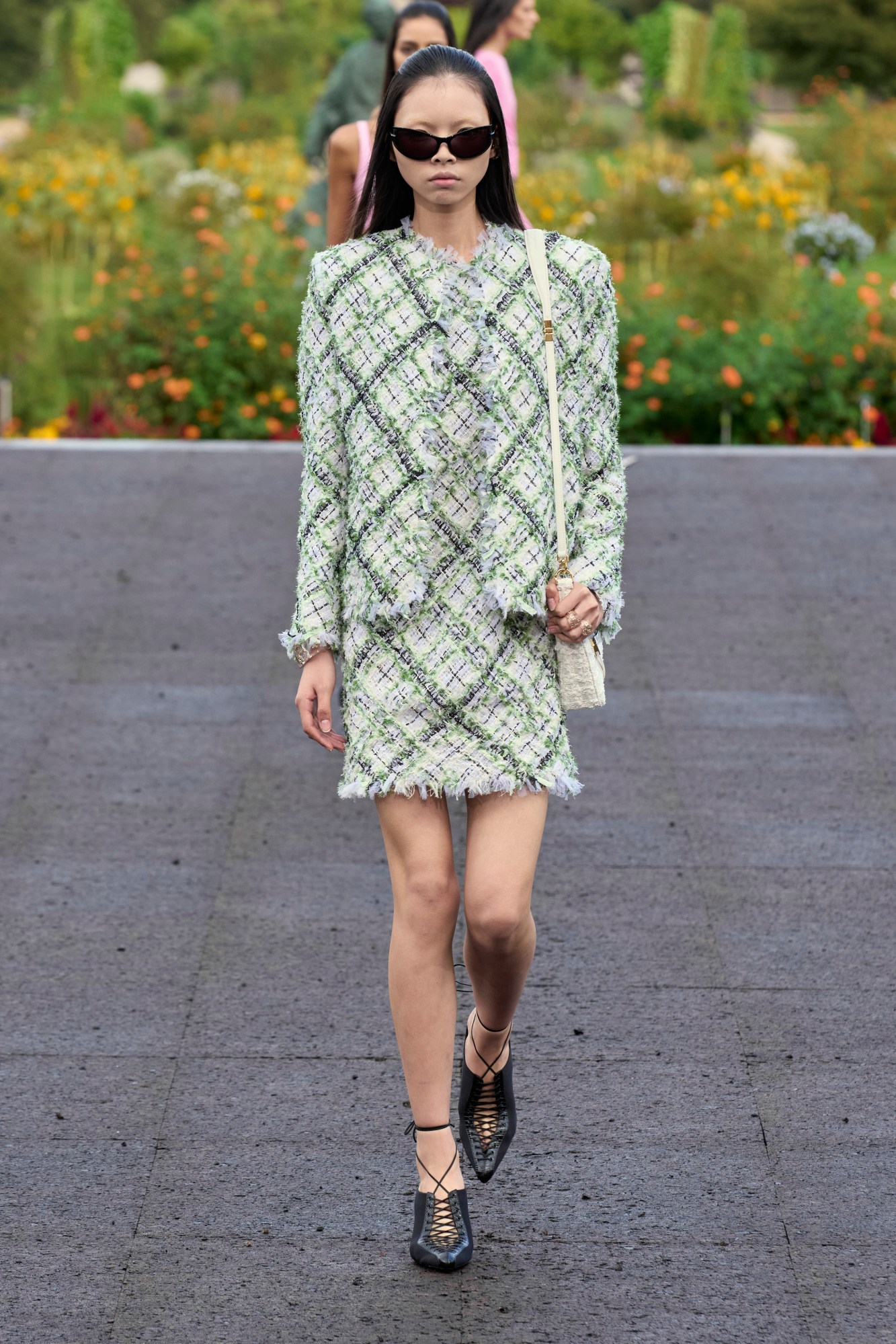
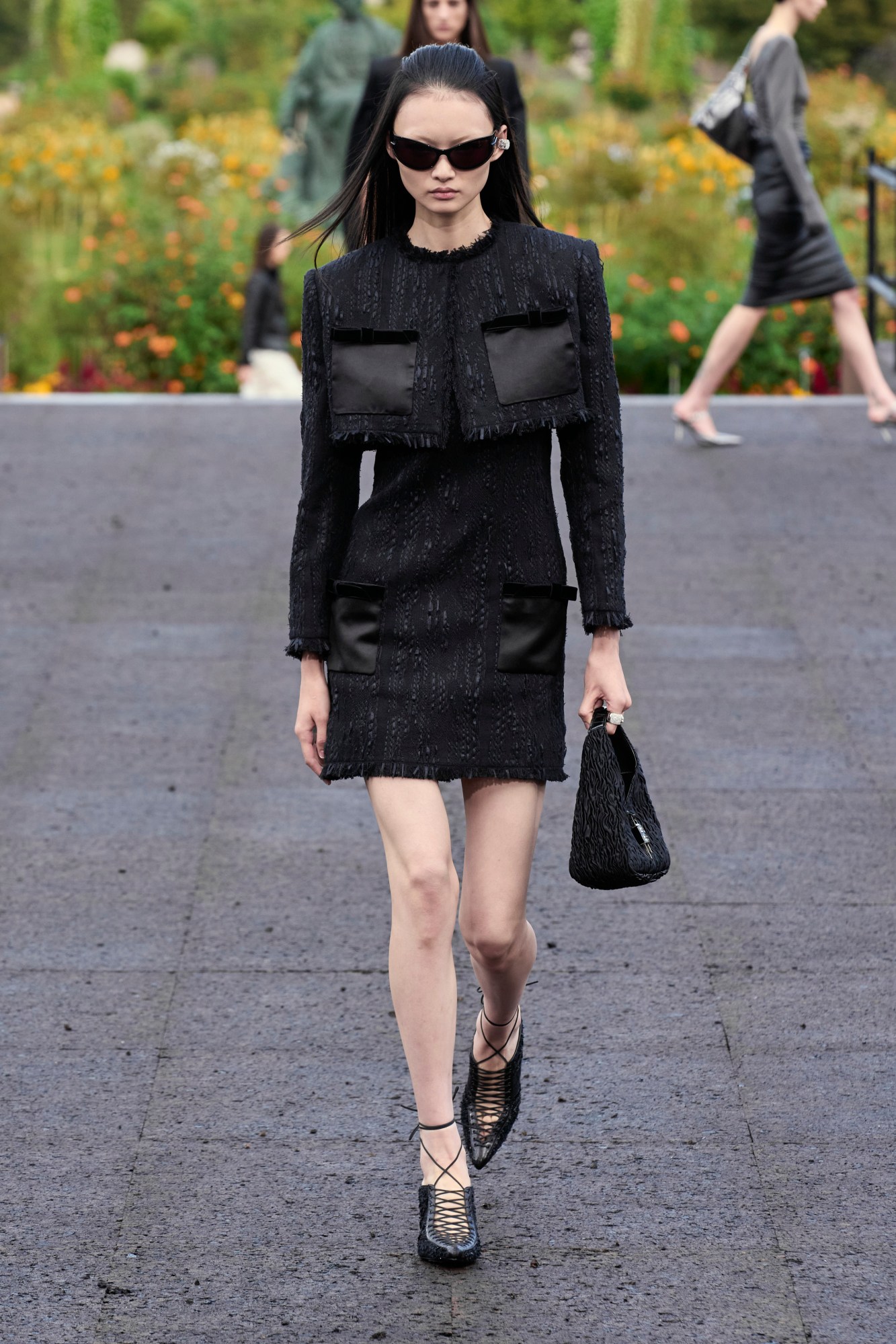
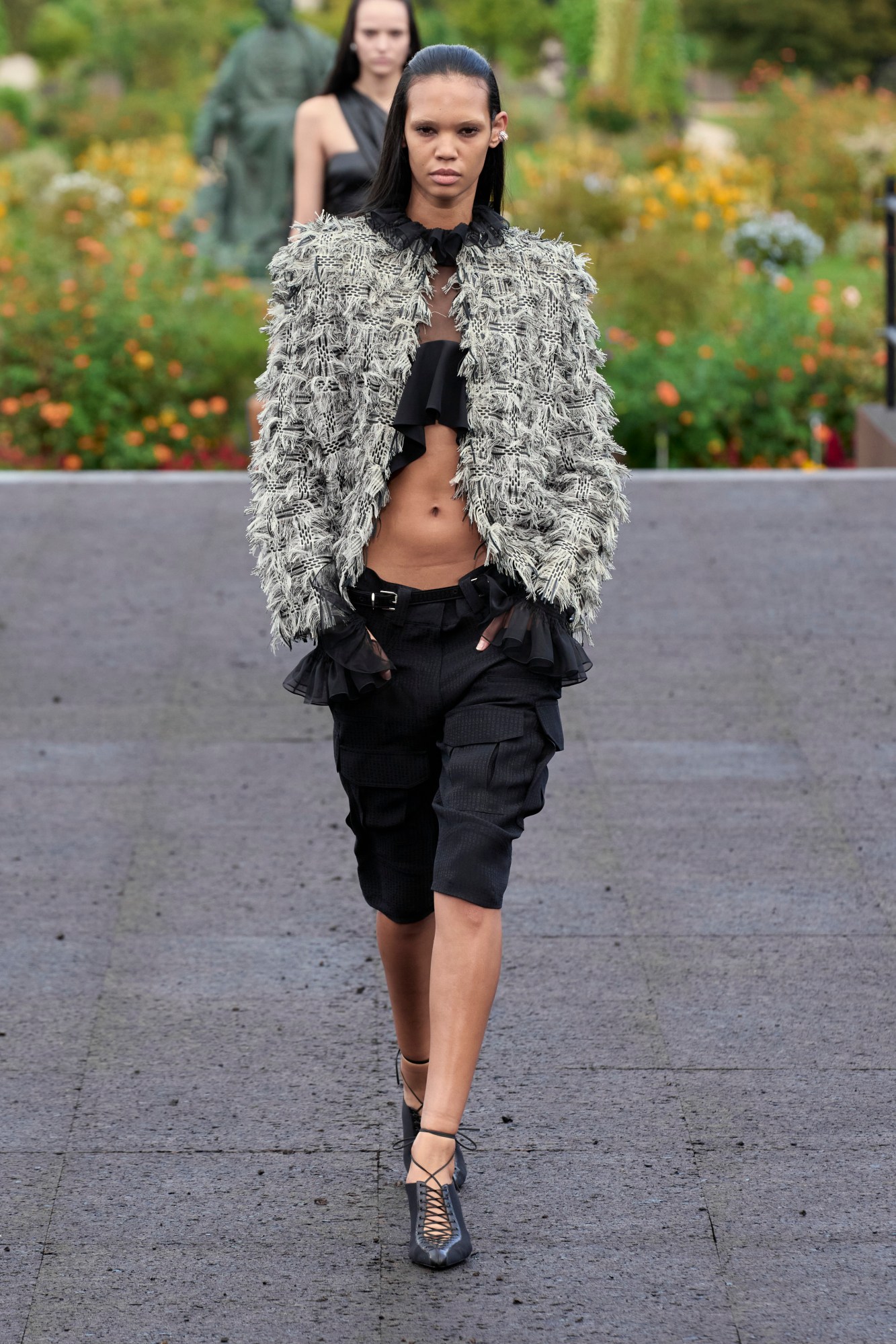



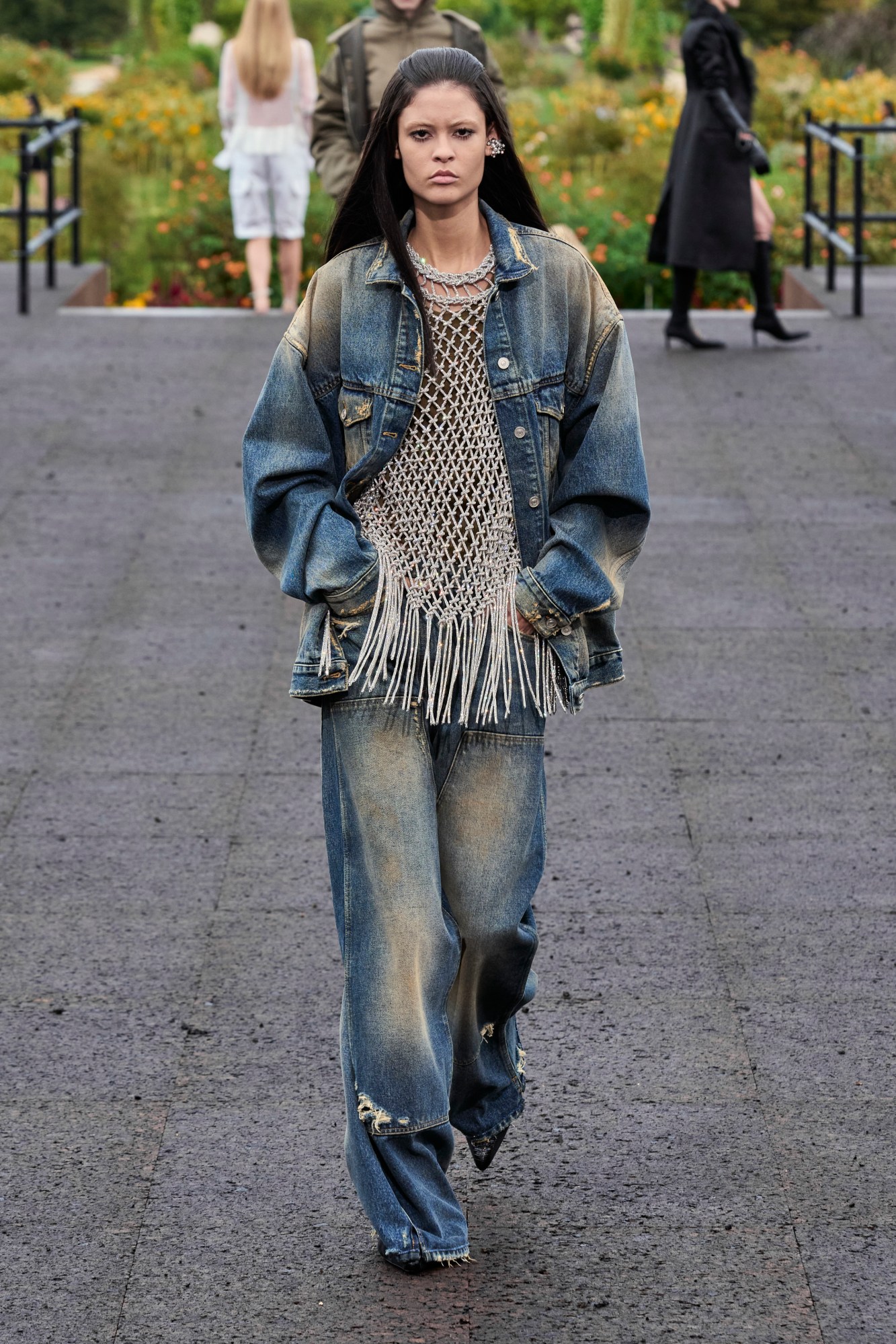

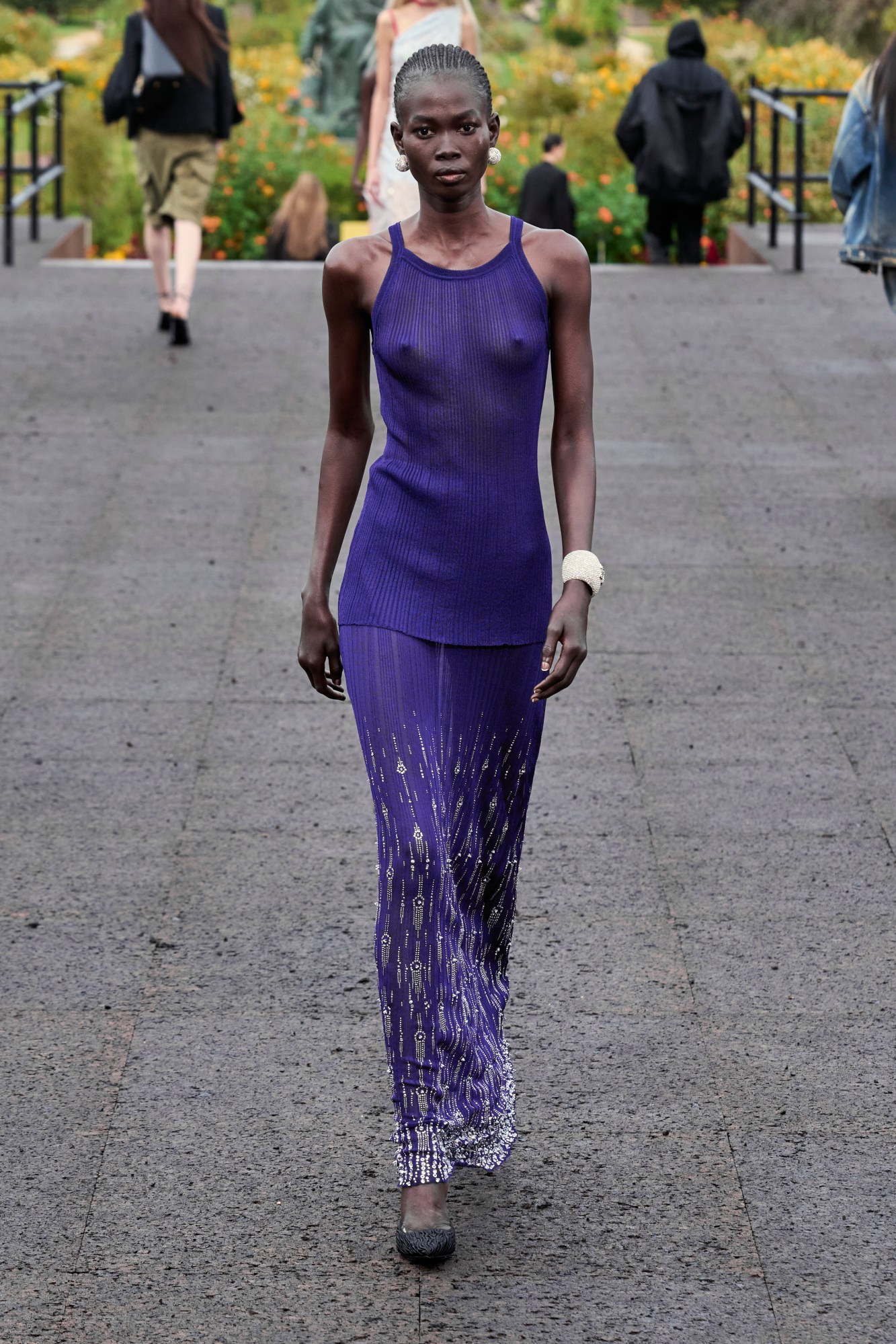
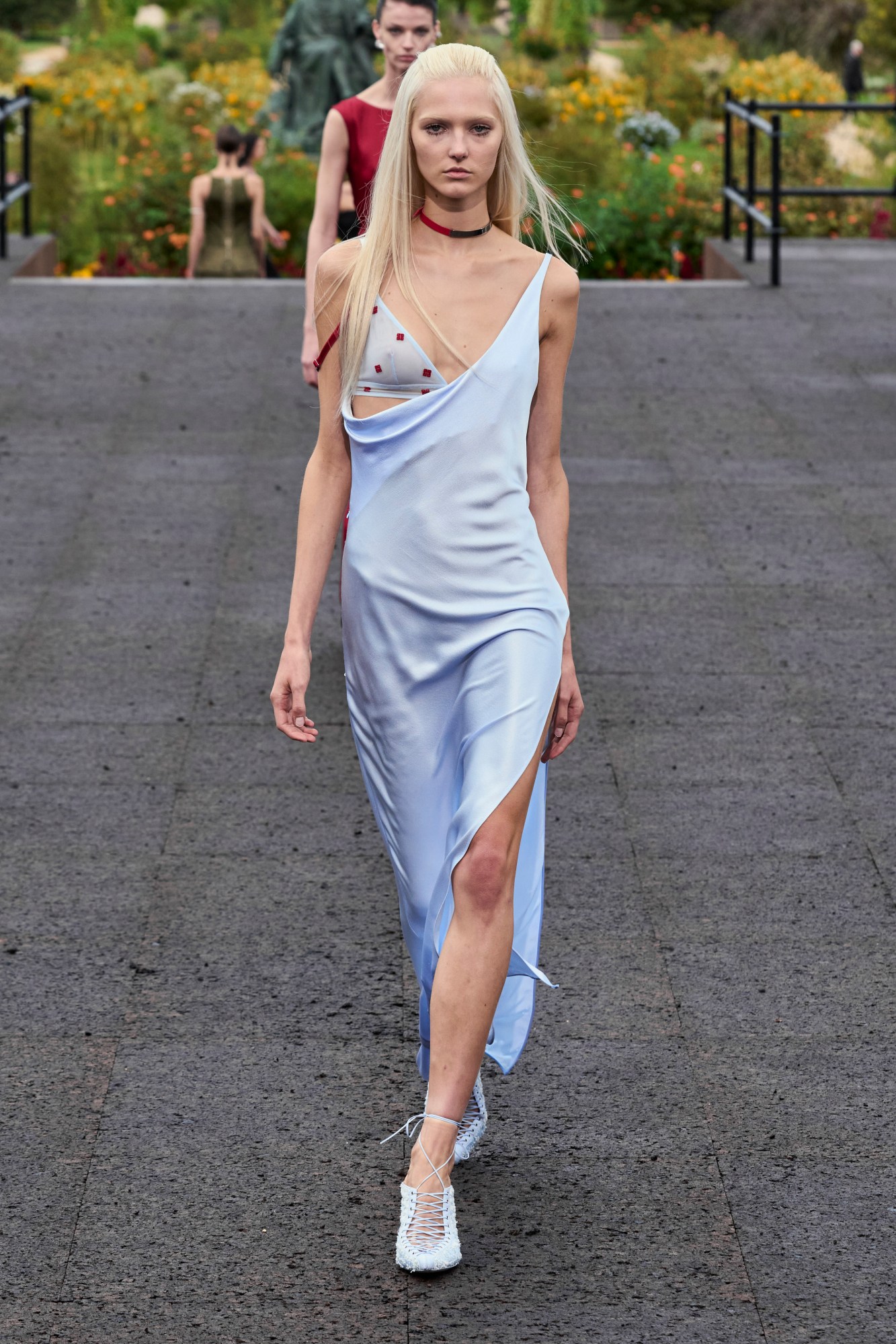
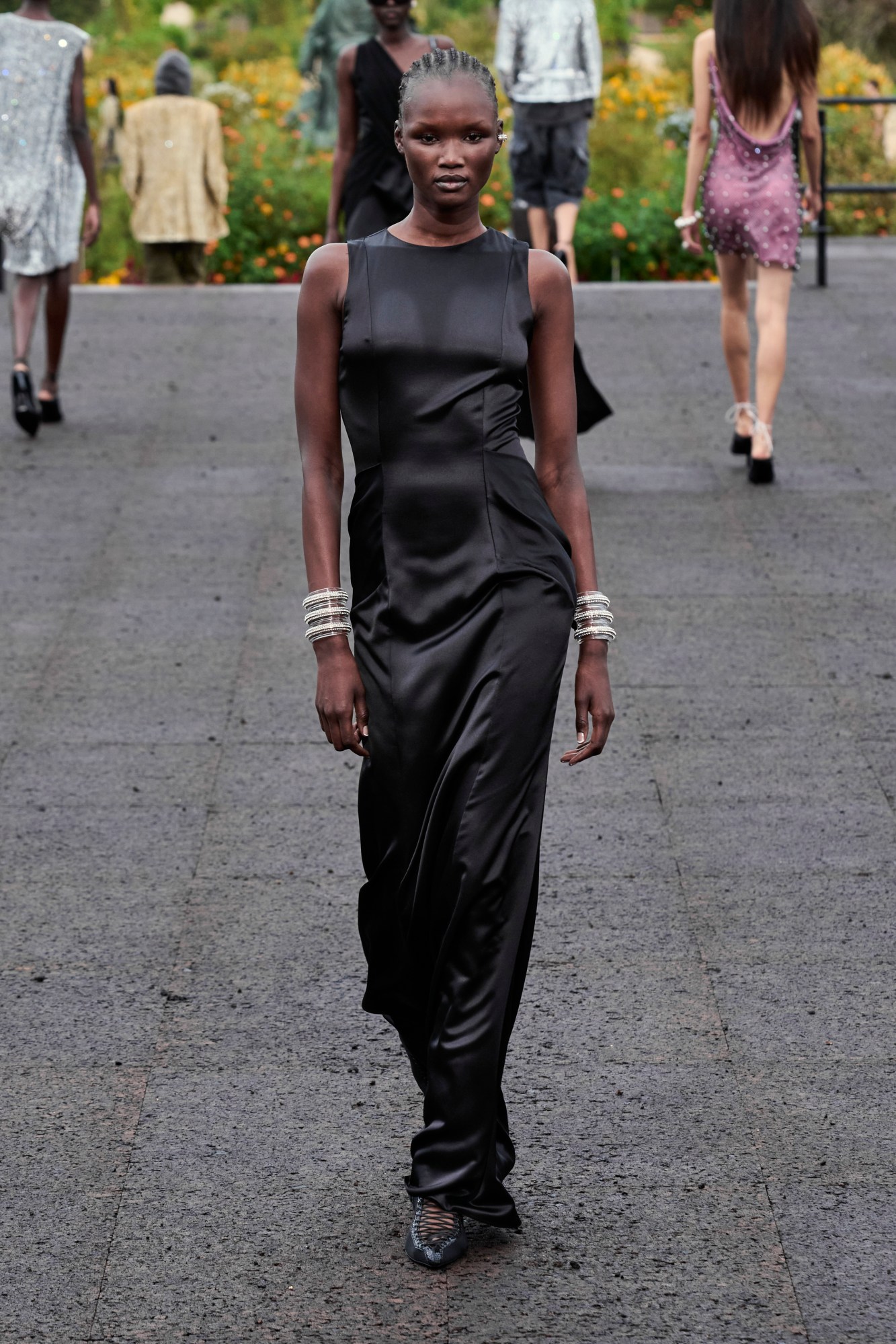
Credits
Images via Spotlight
